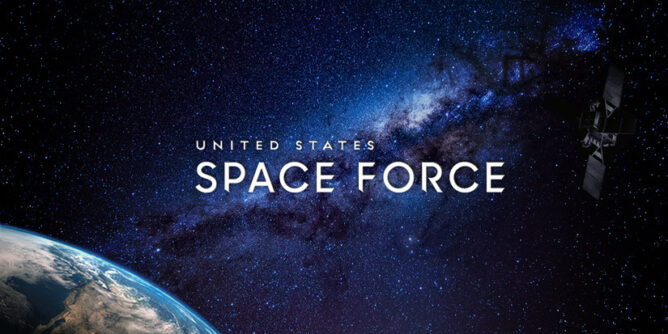
The recruiting ad was only one of many topics Barrett and Raymond addressed during a 40-minute webinar sponsored by the Space Foundation, an organization that advocates for space and is comprised of businesses and organizations with connections to all facets of space operations, policy and commerce.
In her brief opening remarks, Barrett noted the importance of explaining the Space Force, what it does and why creating the first new branch of the military since 1947 is necessary.
The most tangible example, she said, is the Department of the Air Force Rapid Capabilities Office X-37B, in partnership with the U.S. Space Force which will launch again for the sixth time on May 16.
“This reusable space plane has completed five missions with 2,865 days of total time on orbit,” she said. “And, the next time the X-37B takes off it will deploy FalconSat-8, a small satellite developed at the U.S. Air Force Academy — where the first 86 cadets recently commissioned into the Space Force. FalconSat-8 will carry five experimental payloads and provide cadets a unique opportunity to gain hands-on experience with space operations.”
Adding another detail, Barrett said the mission will carry another experiment fashioned by the Naval Research Laboratory that will attempt to transform solar power into radio frequency microwave energy and then transmit the energy to Earth.
“It is a critical time for space. But it’s also an incredibly exciting time. There are advances being made in all sectors of the space domain whether it is national security space, commercial space, civil space with the moon to mars programs and international space,” Raymond said.
Later, in response to a question from the audience, Raymond closed the circle.
“The average American needs to understand just how reliant their life is on space. Space fuels the American way of life. Space also fuels our American way of war,” he said. Space plays a critical role in everyday communications, navigation, commerce and science. Without free access to space, cell phone calls, electronic banking and GPS service would be disrupted.
Raymond and Barrett both highlighted the changing nature of space as a reason for creating a separate branch of the military. Where once space was a tranquil domain of the United States and Russia, today it is far more crowded, congested and competitive.
“We do not want to get into conflict that begins or extends into space,” Raymond said. “We want to deter that. But the way you do that is from a position of strength.
“What gives us a position of strength is our partnerships. We also need to have systems that are defensible. And we have to continue to train our operators to have the warfighting skills necessary to accomplish this mission.”
The Space Force, which came into existence Dec. 20, 2019, has a $15.4 billion budget and is in the process of building its force. There are currently 88 commissioned space professionals but by the end of the year that number is expected to grow substantially. In all, the service’s total force is expected to be about 16,000.
As he has done in the past, Raymond said the force is designed to be small and agile and trailblazing. In the virtual town hall he noted that the Space Force will use acquisition systems “that are custom built, purpose built for space.”
“Speed of acquisition,” he said, “is important if we are to stay ahead of the growing challenges we see in space.”
Asked how the Space Force is adjusting to the coronavirus pandemic, Raymond said the force, like the rest of the military, “is taking very active measures to protect our crew force, our personnel.” Barrett noted that the Space Force is also contributing to the response by ensuring continued and accurate GPS service and in more distinct ways such as reconfiguring satellites to ensure the Navy’s hospital ship, the USNS Mercy, had sufficient bandwidth during its deployment to Los Angeles.
And in a less serious moment, Barrett and Raymond were asked to comment on the new Netflix production about a Space Force that features actor Steve Carell. Raymond said he had seen the trailer and added, “The one piece of advice I’d give to Steve Carell is to get a haircut. He’s looking a little too shaggy if he wants to play the Space Force Chief.”









